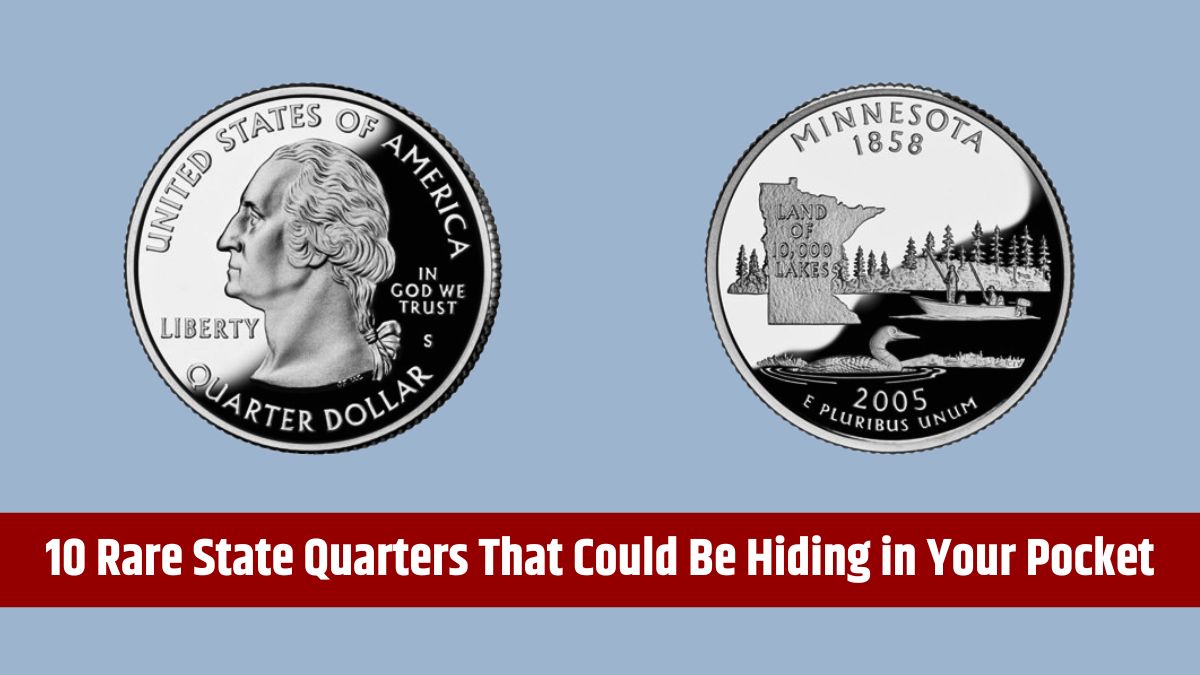The U.S. State Quarter program, introduced in 1999, wasn’t just a tribute to American heritage—it turned ordinary quarters into potential treasures. While most are worth their face value, some rare variations are prized by collectors and can fetch thousands. Let’s cut into these fascinating coins and how you can identify them.
Table of Contents
Factors
Before exploring specific coins, let’s understand why some quarters are more valuable than others. Three main factors determine their worth:
- Minting Errors: Imperfections during production.
- Limited Production: Fewer coins mean higher demand.
- Condition: Pristine, uncirculated coins are more valuable.
Valuable Quarters
Delaware “Spitting Horse” (1999)
This quarter, the first in the series, features a unique error. A die crack near the horse’s mouth gives the illusion of “spitting.” In mint condition, these coins can fetch up to $5,000.
Pennsylvania Double Die (1999)
This variant displays a doubling error on the reverse lettering. Known as the “Double Die Reverse,” it’s valued up to $1,000. The error is easy to spot with careful observation.
New Hampshire “Hanging Old Man” (2000)
A die crack in this quarter creates an unfortunate visual of a rope around the “Old Man of the Mountain” rock formation. Depending on prominence, these coins are worth up to $500.
South Carolina Doubled Text (2000)
Doubling in the word “South” makes this quarter stand out. Although less valuable, it can still fetch up to $250 in excellent condition.
Wisconsin “Extra Leaf” (2004)
Perhaps the most famous, this quarter comes in two versions:
- Extra High Leaf
- Extra Low Leaf
Both show an additional leaf on the corn stalk, with values reaching $1,500.
Minnesota Double Die (2005)
This variant shows doubling in background trees. Depending on its condition, the value can reach $300.
Colorado “Cud Error” (2006)
A die crack along the mountain range creates an illusion of an extra peak. Prominent examples are worth up to $250.
Hawaii Double Die (2008)
Doubling in the state name makes this newer quarter a collector’s favorite, with values up to $500.
District of Columbia “Ellington Error” (2009)
Featuring a misspelling of Duke Ellington’s name, this quarter can command up to $1,000, especially in uncirculated condition.
Finding Valuable Quarters
- Inspect Carefully: Focus on the years mentioned above.
- Use Tools: Magnifying glasses help spot subtle errors.
- Preserve Quality: Handle coins by their edges and store them safely.
Where to Look
- Pocket Change: Valuable coins still circulate.
- Bank Rolls: Request rolls of quarters to search through.
- Coin Shops and Shows: Ideal places to find or verify rare quarters.
- Estate Sales and Collections: Hidden treasures often appear here.
Protecting and Verifying Finds
Suspect you’ve found something valuable? Here’s what to do:
- Handle coins carefully to avoid damage.
- Store them in protective holders.
- Use a professional grading service to authenticate value.
Selling Your Coins
When it’s time to sell, consider:
- Coin Dealers: Professionals who buy and sell.
- Online Auctions: Platforms like eBay can attract competitive bids.
- Coin Shows: Great for networking with collectors.
- Private Collectors: Direct sales can maximize profits.
The State Quarter program unexpectedly created a treasure hunt for collectors and enthusiasts. From die cracks to doubling errors, these unique variations turn simple pocket change into prized collectibles. Stay vigilant—you might just find a hidden gem that transforms a common quarter into a fortune.
FAQs
What is the most valuable state quarter?
The Delaware “Spitting Horse” quarter, worth up to $5,000.
How can I identify error coins?
Look for die cracks, doubling, or unusual details.
Are valuable quarters still in circulation?
Yes, some rare quarters can be found in change.
How do I preserve valuable coins?
Handle them carefully and store in protective holders.
Where can I sell rare quarters?
Try coin dealers, auctions, shows, or private collectors.







